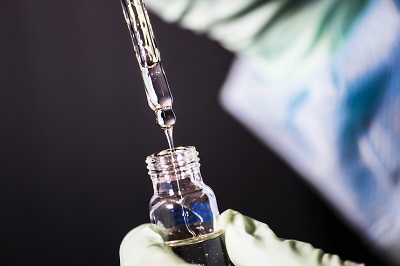What are the requirements for applying for A-class medical device registration with Singapore HSA?
Release time:2025-01-08 14:06:52
The author:
source:
To apply for A-class medical device registration with the Health Sciences Authority (HSA) in Singapore, you need to meet several requirements to ensure your device complies with the regulatory framework. The registration process is designed to ensure that medical devices sold in Singapore are safe, effective, and of high quality.
To apply for A-class medical device registration with the Health Sciences Authority (HSA) in Singapore, you need to meet several requirements to ensure your device complies with the regulatory framework. The registration process is designed to ensure that medical devices sold in Singapore are safe, effective, and of high quality.
Key Requirements for A-Class Medical Device Registration with HSA
1. Device Classification
- A-class medical devices are considered low-risk devices. They generally include non-invasive devices such as bandages, surgical instruments (e.g., scalpels), and other basic medical tools that do not pose significant risks to patient safety.
- The HSA uses the medical device classification system to determine the risk category for the device. For A-class devices, there are minimal regulatory requirements compared to higher-risk devices like B, C, or D-class devices.
- Ensure that your device qualifies as an A-class device. You can refer to the HSA medical device classification guidelines or consult with HSA if unsure about the classification.
2. Appoint a Local Authorized Representative (For Foreign Manufacturers)
- Foreign manufacturers must appoint a local Authorized Representative (AR) in Singapore. The AR is responsible for submitting the registration application and handling communications with HSA on behalf of the manufacturer.
- If the manufacturer is located outside Singapore, the AR must be a registered entity with the HSA and should be experienced with the regulatory requirements.
- Local manufacturers (i.e., those based in Singapore) do not need an AR.
3. Conformity Assessment and Compliance
- The device must conform to the relevant regulatory standards, which may include ISO certifications, Good Manufacturing Practices (GMP), and other international quality management standards.
- If your device is manufactured according to ISO 13485, provide a copy of the ISO 13485 certificate.
- A Declaration of Conformity from the manufacturer is required, affirming that the device meets the necessary standards and regulatory requirements.
4. Risk Management
- Risk management is an essential aspect of device registration. You must provide a risk assessment report and a risk management file that outline the potential risks associated with the device and how these risks are mitigated.
- Typically, ISO 14971 (Risk Management for Medical Devices) is used as a standard for conducting risk analysis.
5. Device Labeling and Instructions for Use (IFU)
- The device must be properly labeled, and clear Instructions for Use (IFU) must be provided.
- Labeling Requirements: The label should include:
- Name of the device
- Manufacturer's name and contact details
- Intended use of the device
- Warnings, precautions, and contraindications (if applicable)
- Any relevant regulatory marks (e.g., CE Mark or FDA clearance, if applicable)
- Instructions for Use (IFU): A manual or guide detailing how to use the device safely and correctly. It should include:
- Usage instructions
- Warnings and safety precautions
- Storage and handling instructions
- Maintenance information (if applicable)
- Labeling Requirements: The label should include:
6. Manufacturer Information
- You must provide details about the manufacturer and the manufacturing site. This includes:
- Manufacturer’s name and address
- Contact information for the manufacturer
- Details of the manufacturing site (if applicable)
7. Clinical Data (If Applicable)
- For A-class devices, clinical data is generally not required, as these devices are considered low-risk and do not typically involve complex clinical claims.
- However, if your device has specific claims that require clinical validation, you may need to submit clinical data or literature reviews demonstrating its safety and performance.
8. Submission of Documents via the RIMS Portal
- All applications for medical device registration must be submitted through the Regulatory Information Management System (RIMS) portal, which is managed by HSA.
- You must create an account on RIMS (or have your Authorized Representative do so if you are a foreign manufacturer).
- The application will require you to submit:
- Completed application form
- Device description, labeling, and IFU
- Risk management information
- Certificates of conformity, ISO certifications, etc.
9. Fees
- You will need to pay the applicable registration fee for A-class devices. The fee typically ranges from SGD 500 to SGD 1,000 for A-class devices, but this can vary depending on the specific device.
- Payment is done electronically via the RIMS portal during the submission process.
10. Post-Market Requirements
- Once your device is registered, you must comply with post-market surveillance requirements:
- Adverse Event Reporting: Report any adverse events or safety issues associated with the device to HSA.
- Quality Assurance: Ensure ongoing compliance with applicable standards.
- Periodic Re-registration: Depending on the device and regulatory updates, re-registration may be required.

Whatsapp or Wechat:+86 15816864648;email address:hito.lin@grzan.cn
.png)
.jpg)
.png)

.png)